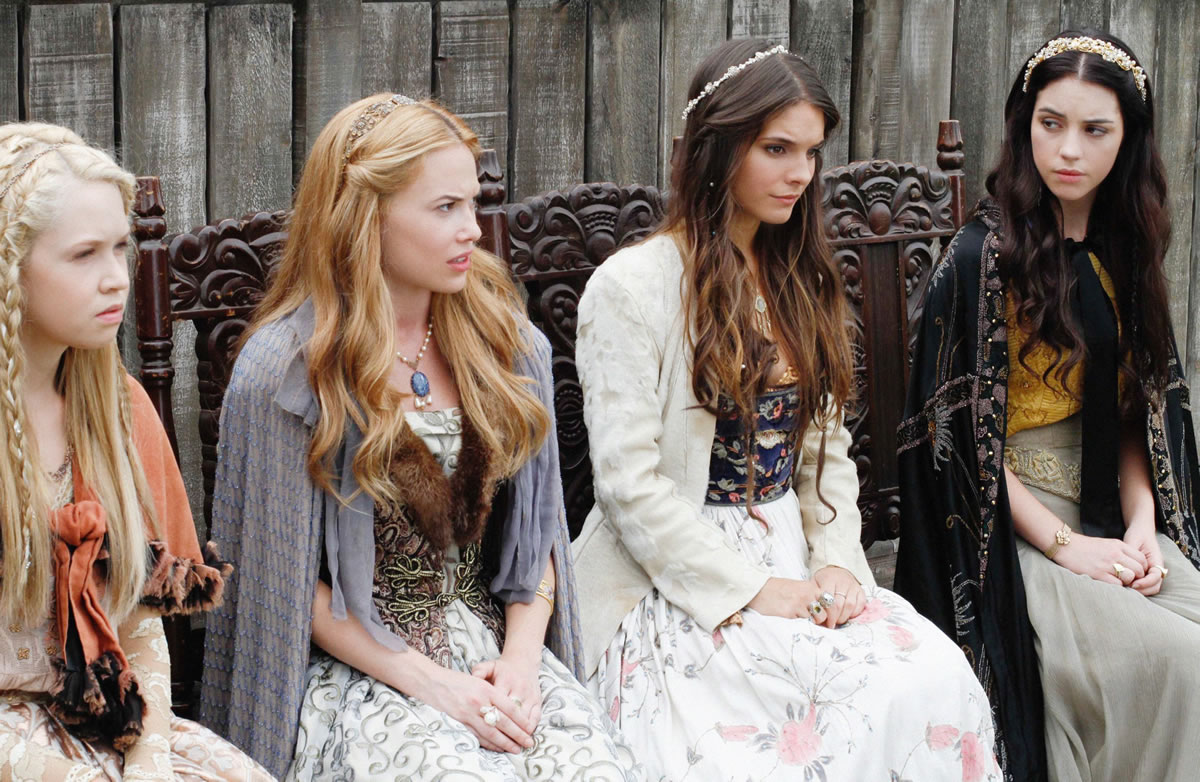Historians don’t concur on when the Middle Ages ended and the Renaissance began, but we can all agree that the eras of castles and sword fights are both doing quite well on television in 2015.
From the grimy ninth century realism of “Vikings” to the sort-of-16th-century romanticism of “Reign,” shows about pre-industrial Europe are popping up everywhere.
The reasons behind the trend are many, but the largest cause is almost certainly a show that takes place in a world that doesn’t exist at all: “Game of Thrones.”
HBO’s megahit might take place in the fictional land of Westeros, but everything about it screams Middle Ages, from the feudal politics to the sword fights to the dragons, although in Westeros those are not mythical.
That’s no surprise, given that George R. R. Martin, who wrote the series of books the show is based on, drew his inspiration from England’s 15th-century War of the Roses.
But “Game of Thrones” also gets to spend $6 million to $10 million an episode to create its fantasy realm, an amount far outside the budget of any other show; $3 million an episode is considered expensive.
So producers can re-create the medieval feel of “Game of Thrones” by cutting out the fantasy — i.e. the fantastical effects — and making a series grounded in history. Most make minimal use of special effects and instead rely on location shooting and great props and set decoration.
For instance, “Vikings,” History’s acclaimed drama series, uses almost no computer-generated effects. Its seafaring scenes are shot on 56-foot Viking ship replicas built for the series.
One reason Westerns were so popular in the 1950s and ’60s is that Southern California locations and studio lots were custom-made for the genre. Today, TV production is international, allowing for location shooting that fits almost any milieu.
For the new FX series “The Bastard Executioner,” a set with a town and a small castle was built at Pinewood Studios near Cardiff, Wales. “Reign,” the CW’s drama based on the early life of Mary, Queen of Scots, shoots mainly in Toronto but has done many exteriors in Ireland.
Even “Galavant,” ABC’s not-very-historical medieval musical comedy did some shooting on location at Berkeley Castle in England.
Writers, too, find great freedom in working with characters who rely basically on what they can carry with them. The cellphone and the Internet have made it easy to gain information and solve problems — which is not much use in the world of drama.
Writers of contemporary scripts often have to go to great lengths to separate protagonists from their smartphones. No such trickery is required if your characters live in the days before electricity.
Combat, too, becomes more believable — and interesting — when it is hand-to-hand. Need a character to survive a fight? In a show with blazing automatic weapons, that requires some absurdly bad shooting by the bad guys. Getting away from a guy with a sword is a heck of a lot more plausible.
Over all of this is that historians say the modern Western culture emerged from the Middle Ages and was forged in the early Renaissance. We can still see ourselves in characters from this time.
Mark Rylance, who portrayed Thomas Cromwell, Henry VIII’s confidante, in the PBS series “Wolf Hall,” told a gathering of television critics earlier this year that “500 years is not that many generations back. If people were that different, I don’t think the Shakespeare plays would be as popular as they are now.”



